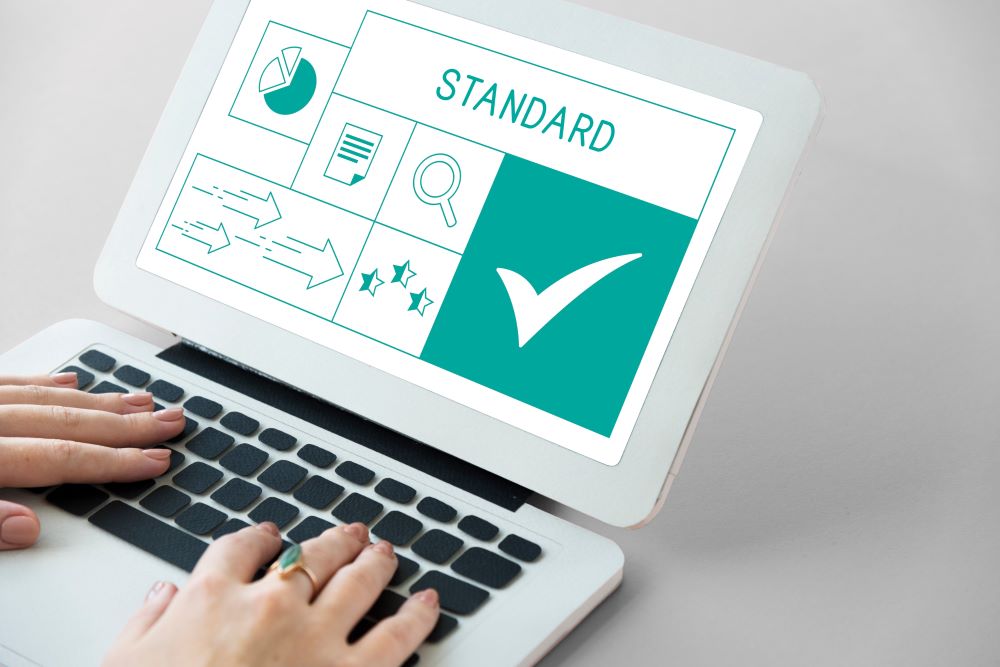Ross McGill
Your W-8 Questions Answered
In our last blog about W-8 forms, we talked a bit about what they are and what they’re used for. We got a lot of questions about W-8 forms off the back of that post, so today I thought it would be a good idea to gather some of them together and answer them. I promise I’ll do my best to not answer each one with ‘it depends’!
If you need an update on the basics of a W-8, click here to read the last article. Otherwise, let’s get into it.
Who Needs to Complete W-8 Forms?
Any non-US investor trying to open an account with a broker or a custodian bank will almost certainly be asked to provide a W-8 (or a W-9 if they’re American). The institution will ask you to fill one in or collect the information they need from their website (called a substitute W-8).
Which Countries Have Double Tax Treaties with The US?
This is a tricky one because double-tax treaties are changing all the time. However, I can tell you that at the time of writing, there are approximately 65 countries that have a tax treaty with the US. Get ready for a long list, because that includes:
- Armenia
- Australia
- Austria
- Azerbaijan
- Bangladesh
- Barbados
- Belarus
- Bulgaria
- Canada
- Chile
- China
- Cyprus
- Czech Republic
- Denmark
- Egypt
- Estonia
- Finland
- France
- Georgia
- Germany
- Greece
- Iceland
- India
- Indonesia
- Ireland
- Israel
- Italy
- Jamaica
- Japan
- Kazakhstan
- Korea
- Kyrgyzstan
- Latvia
- Lithuania
- Luxembourg
- Malta
- Mexico
- Moldova
- Morocco
- Netherlands
- New Zealand
- Norway
- Pakistan
- Philippines
- Poland
- Portugal
- Romania
- Russia
- Slovak Republic
- Slovenia
- South Africa
- Spain
- Sri Lanka
- Sweden
- Switzerland
- Tajikistan
- Thailand
- Trinidad
- Tunisia
- Turkey
- Turkmenistan
- Ukraine
- Venezuela
- United Kingdom
- Uzbekistan
When And Where to Submit Your W-8
No one submits their W-8 or W-8BENEs directly to the IRS. Instead, you send them back to the institution that requested it. They will then be used by the institution to decide whether to let you open an account, how to treat and tax US investment income paid to your account and whether your account is reportable under US anti-tax evasion regulations.
What’s The Difference Between W-8 And W-9 Forms?
Just to add in another issue, there’s also a W-9 form. Thankfully, it’s easy to differentiate the two.
W-8 forms are for non-residents of the US only. That includes international students, who will need to file a W-8BEN where necessary.
W-9 forms are for citizens and residents of the US. So if you’re a US resident for tax purposes, then you’ll need to provide a W-9.
How Long is a W-8BEN Valid For?
It does depend (sorry).
Provided none of the details on the form change, your W-8BEN will be valid for three calendar years from the end of the year in which you sign it. So, if you completed the form on the 28th of March 2024, it will be valid until the 31st of December 2027.
There is another quirk of the system, but it shouldn’t affect you. Your financial institution is collecting these W-8s to document your tax status under two different “chapters” of the US Internal Revenue Code – Chapter 3 and Chapter 4. The quirk is that if your financial institution is only collecting the W-8 solely to document your Chapter 4 status, then the form is valid indefinitely or until you have a change in circumstances. The three-year validity rule only applies if you’re expecting to receive US investment income into your account, so the financial institution needs to know your Chapter 3 status too.
What’s The Difference Between a W-8BEN and a W-8BENE?
There are a few differences between the W-8BEN and the W-8BENE. The main one is that the W-8BENE is the form for ‘entities’, meaning any type of business or other type of institution that has more than one owner. That could be a corporation, certain types of partnership or trust, exempt entity, public and private foundations, international organisations and even foreign governments.
The default US tax rate for income received by foreign businesses is 30%, but this form will allow the business to receive a tax treaty reduction if it’s applicable and if it’s properly claimed on the form. In particular, the entity has to make a certification on the form to show that it meets what is called the limitation on benefits test.
The W-8BEN on the other hand, applies to income paid to individuals. So while the outcome is similar, the forms are aimed at different categories of people and types of account holders.
We went over these differences in more detail here.
What Happens If I Fill in the Form Incorrectly?
There are estimated to be around 900 million W-8s in circulation and about 30% are completed incorrectly in Europe. That failure rate rises to about 70% in Asia. That’s because it’s an American tax form, it’s not simple and it’s not written in plain English. Differences in language, culture and levels of understanding can affect whether you understand what you’re signing.
The big thing to recognise is that the form is signed under penalty of perjury. This means that if you fill the form in incorrectly, whether that’s deliberate or accidental, and your financial institution taxes your US income at the wrong rate, you’re the one on the hook for liability, not them.
In the end, most financial institutions are very conservative. If there is any doubt, they will tax at the maximum rate of 30%. That means that you may be over-taxed through no fault of your own. In such cases, if your financial institution is a qualified intermediary (QI), then you can ask them for a refund because their contractual agreement with the IRS obligates them to do so. If they are not a QI, then you can, in theory, file a claim directly to the IRS for a refund. The process is not simple or quick and you’ll need to ask your financial institution for a form 1042-S to prove that they over-taxed you. Then, if you’re an individual, you can file a claim on a form 1040-NR together with your 1042-S (and other supporting evidence). If you’re filing a reclaim request for an entity that was over-taxed, the form will be an 1120-F.
Who Can Help Me?
Us! At TConsult we have over 20 years’ experience in the financial services industry, particularly dealing with US withholding tax and all that comes with it. Our subject matter experts have detailed knowledge of the governments and financial institutions in over twenty-seven countries, making us perfectly placed to handle your W-8 questions and support you through the process.
We created an online platform for W-8 forms to be used by financial institutions. So, if you work for a financial institution that provides access to the US securities markets, you should get a demonstration of our Investor Self-Declaration (ISD) system. This collects all the required information for a substitute of all the W-8 forms or W-9 and makes sure that you don’t make any mistakes.
If you would like to know more, or if you’re a financial institution struggling with compliance, or you have questions about a W-8, W-8BEN or W-8BENE, just get in touch with one of our experts today.
Articles
Gain deeper insight with articles that give our considered opinion and predictions of where the industry will go next.

The Challenge of Client Onboarding: Integrating KYC & Tax Documentation
August 27, 2024Welcome to a very special post! A few weeks ago, TConsult chairman Ross had the opportunity to speak with Remonda […]Read more

Understanding Your Obligations Under CRS
August 7, 2024CRS, or the Common Reporting Standard, is a key part of the OECD’s Automatic Exchange of Information Framework, otherwise known […]Read more

Things To Do In August – Your Tax Checklist
August 2, 2024In the Northern Hemisphere, August is most commonly known as ‘summer holidays’. Many of us are going on vacation, enjoying […]Read more

八月要做的事 – 您的稅務清單
August 2, 2024在北半球,八月通常被稱為「暑假」。我們許多人都會去度假、享受陽光和充分的休息。但南半球的人則處於冬季之中,仍然非常忙碌。可悲的是,度假並不代表法規也會讓您放假 – 期限就是期限,如果您因為員工放假而錯過截止日,那麼您將無法獲得任何幫助。 因此,如果您想保持領先,以下是您在八月份需要做的事情。 準備您的美國報稅表 信不信由您,現在是時候開始準備1042表單的美國報稅表了。大多數QI和NQI早在一月或二月就已申請展延,這表示您的展延截止日期將會在9月14日。但等到最後一分鐘才準備妥當,絕對不是一個好主意。 您的1042表將需要與您自己所有的1042-S和您提交的任何修訂,還有您從交易對手收到的上游1042-S的總和進行比對。如果您是非預扣式QI,您不需要填寫方格1-59,這可以讓您鬆口氣!相對地,您只需要將總數填入方格59和60。但如果您是預扣式QI,則需要填寫方格1-59。但請記住,每個方格中的金額應與納稅義務期間相符,而不一定與您向美國財政部繳納時的時間相符。 別擔心,這並不像聽起來那麼可怕!感謝新成立的合格與授權中介機構協會(Association of Qualified and Authorised Intermediaries, AQAI)的努力,您今年的1042表不需要電子化。它仍然可以用紙本來完成 – 您只需要確保您得到正確的地址,並且非常確定您以掛號方式寄送。如果IRS說他們沒有收到(這已經發生過好幾次),您就需要能夠證明寄送的情況以避免問題。這可能而且確實讓不少公司陷入困境。 我們最近遇到一家微型QI公司,他們無法證明自己寄出1042表單。IRS拒絕收件,然後又拒絕了他們定期審查豁免的請求。所以現在他們有6個月的時間完成定期審查並做認證。這都是因為他們沒有郵資證明!這是一個如此簡單的錯誤,但對於微型QI來說,成本加起來很容易就超過他們徵收的稅款。 還有一點關於1042報稅表的注意事項。如果有人幫您準備1042,而且他們已獲得報酬,那麼他們將需要有IRS核發的PTIN,而且必須顯示在1042表第一頁的下方。 準備W-8更新 您需要做的另一件大事是開始計劃更新所有到期的W-8。大多數公司都知道,這些表格的有效期為三年,從簽署的那年年底算起。這表示所有在2021年簽署的W-8將於2024年12月31日到期。如果您像許多公司一樣,使用這些W-8來收集FATCA狀態和租稅協定優惠申請,那麼更新程序就非常重要,並可能佔用大量資源。尤其是,如果W-8申報了協定優惠,而客戶沒有續期,您就需要將他們的稅率從較低的協定稅率變更為法定的30%。對於QI而言,這需要將他們的資產轉入不同的稅率池帳戶,這對您來說並不理想。您的客戶可能也會相當不高興!因此,如果您打算在9月進行更新,您最好在8月之前就制定好計劃。 […]Read more

誰想成為責任長官?
July 29, 2024究竟什麼是責任長官? 線索其實就在名稱裡。是公司的「長官」(通常是董事),且他們必須「負責」。 當然,這不能說明什麼,不是嗎? 當談到FATCA和QI法規時,QI和FFI協議已清楚界定這些人員的職責,法規本身也有直接引用。 重要的是要記住這不是遊戲。這些都是具有法律約束力的合約義務,貴公司必須對其負責,而您作為指定的責任長官(Responsible Officer,簡稱RO),是貴公司指定代表公司承擔這些義務的人。 這兩個框架也是反逃稅法規的一部份,所以您不能將這些推給下一層人員。QI和FFI協議規定公司有義務指派RO,這些協議也定義了應報告的違規事項,根據我們的經驗,這些事項通常是重大缺失和違約事件。所以問題來了,您是擔任這個角色的適當人選嗎? 授權(authority)的重要性 令人驚訝的是,許多金融公司並未掌握責任長官這個職位的重要性,而更令人驚訝的是,我們遇過的許多責任長官實際上並不符合責任的標準。因此,讓我們來回顧一下。 責任長官的標準被描述為擁有「足夠權限」執行組織合約條款的人。這不能委託給其他人的另一個原因,也是為什麼責任長官通常是董事,或至少是部門主管。但這裡有一個問題,那就是大多數金融公司在某種程度上都是各自為政。他們的管理結構只會在組織的最高層會面,說得直白一點,最高層的人可能知道大局,但他們對營運層面上發生的事情知之甚少。執行層級的人員也是各自為政,這意味著他們通常知道自己部門發生了什麼事,但可能不瞭解為什麼要求他們做某事,而且對具體的QI或FATCA法規知之甚少或完全不瞭解。他們對企業其他地方的情況也了解有限,當然也沒有權限! IRS對此的解決方案不是根本解決問題 – 而是在合約中讓責任長官承擔責任。 例如,在QI合約中,營運週期包含4個部份: 記錄帳戶持有人 – 這影響到客戶開戶、年度帳戶審查和KYC。 預扣稅款 – […]Read more

Who Would Want To Be A Responsible Officer?
July 29, 2024What Is A Responsible Officer Anyway? The clue really is in the name. It’s an ‘officer’ of the company (typically […]Read more

What Is A Double Tax Treaty?
July 23, 2024What Is A Double Tax Treaty? A double tax treaty – also known as DDT, or a double tax agreement […]Read more

什麼是雙重課稅協定?
July 23, 2024雙重課稅協定(double tax treaty) – 也稱為DDT 雙重課稅協議 (double tax agreement,簡稱DTA),是兩個國家(或政府)之間的協議,以避免在相同的期間內,在兩個國家對相同的納稅人,就相同的課稅事項,徵收相類似的稅收。 雙重課稅協定的目的有三項: 在兩個國家對相同收入徵稅的情況下,防止雙重課稅的風險。 為跨境貿易和投資提供確定或特殊待遇。 防止超額的外國稅收和對抗海外商業利益不平等待遇的其他形式。 在沒有雙重課稅協定的情況下,跨境分配的收入將同時被產生和分配的國家課徵稅收,以及被投資者居住的國家視為所得課稅。因此,舉例來說,英國個人投資於雀巢股票(雀巢是一家瑞士上市公司),將被瑞士當局徵收35%的稅款。他們也必須透過英國報稅申報該收入並繳稅。在這個情境下,同一筆款項會被徵收兩次稅,這對於個人投資來說顯然是不公平的。 雙重課稅協定實際上有什麼作用? 一般而言,兩個國家會簽訂避免雙重課稅協定,說明雙方如何避免雙重課稅。不同國家之間的細節可能有所不同,但一般情況下,投資國(以瑞士為例)會先徵稅,而投資者居住的國家(以英國為例)則會將瑞士已預扣的稅款計算在內。 在雙重課稅協定中,將有一套「條款」說明不同類型的收入,以及政府希望如何處理每種類型的收入。這通常包括投資和其他收入,例如: 股息 利息 權利金 […]Read more

Common Reporting Standard (CRS) Reporting and Due Diligence (CDD) in Taiwan and Hong Kong: Common Deficiencies and Issues
July 16, 2024To align with international standards for tax transparency and deter taxpayers from engaging in international tax evasion, Taiwan began implementing […]Read more

臺灣與香港共同申報準則(CRS)申報及盡職審查:常見缺失與問題
July 16, 2024介紹 為與國際稅務透明度標準接軌,阻止納稅人參與國際逃稅,臺灣於 2019 年開始實施OECD共同申報及盡職審查準則 (CRS)。根據臺灣 CRS,又稱臺版肥咖條款,臺灣金融機構自 2020 年起必須進行 CRS 申報,而財政部(MoF)國稅局 (NTB)自 2022 年起對這些機構進行年度審查。 臺灣CRS實施情形 臺灣在實施 CRS 面臨諸多挑戰。現在主要的挑戰包括準確識別和申報非居民客戶的金融帳戶,以及對財政部國稅局而 言,確保金融機構遵守 CRS 法規。為應對這些挑戰,臺灣金融機構需要建立有效的內部控制程式,以確保資訊的準確 […]Read more
Ross is the founder and chairman of TConsult. He has spent over 26 years working in the withholding tax landscape with companies developing tax reclaim software and operating outsource tax reclamation services.
Ross not only sees the big picture but is also incredibly detail oriented. He can make even the most complex issues simple to understand. He has authored 10 books (including two second editions) on various aspects of tax, technology, and regulation in financial services, making him one of the leading authorities in the world of tax.










